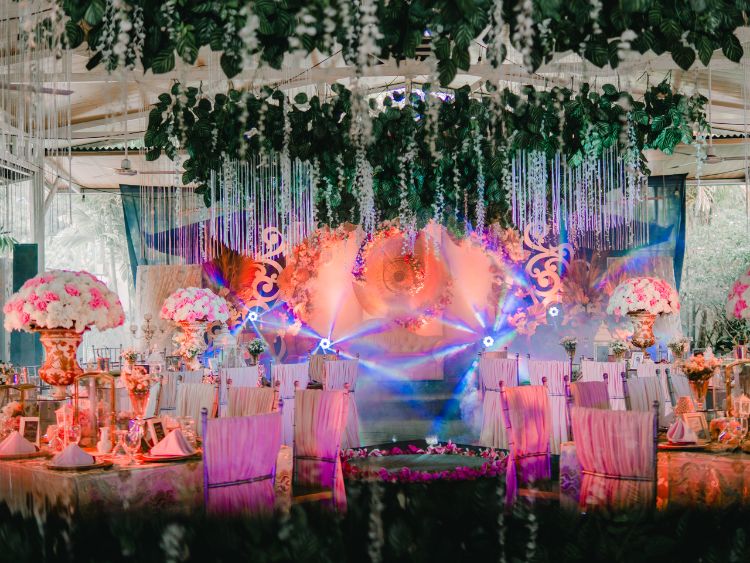When it comes to dress codes, things can get a little tricky, especially when you’re unsure about what’s appropriate. One of the most common dilemmas people face is figuring out the difference between semi-formal and formal attire. While these two styles might seem similar on the surface, they carry distinct expectations that can make or break your appearance at an event. In this article, we’ll dive into the details of semi-formal vs formal attire, helping you confidently prepare for any occasion.
Why Dress Codes Matter
In a world where first impressions are everything, what you wear can significantly impact how others perceive you. Whether you’re attending a wedding, a corporate gala, or a cocktail party, knowing the difference between semi-formal vs formal attire is crucial. Have you ever shown up overdressed or underdressed for an event? If so, you know how awkward that can feel. So, let’s clear up any confusion and help you ace the dress code game.
What Is Formal Attire?
When someone mentions “formal attire,” your mind likely jumps to images of black-tie events, elegant gowns, and tuxedos. And you’d be right! Formal attire is the most polished and elevated dress code, reserved for high-profile events. Here’s a breakdown of what to expect with formal dress codes:
For Men:
- Black Tie: This is the most common form of formalwear for men. A black tuxedo, white dress shirt, black bow tie, and patent leather shoes are the standard.
- White Tie: An even more elevated look than black tie. This ensemble consists of a black tailcoat, white waistcoat, white bow tie, and formal dress shoes.
- Accessories: Cufflinks, pocket squares, and polished shoes complete the look.
For Women:
- Gowns: Formal events usually call for floor-length gowns. These dresses are often luxurious, with intricate details like beadwork, lace, or satin finishes.
- Jewelry: Sparkling diamonds or pearls are often seen, with elegant clutches and heels to complete the outfit.
- Hair & Makeup: Think glamorous, polished styles with a focus on sophistication.
Formalwear is all about elegance and tradition. There’s little room for experimentation in this category, as expectations are quite strict.
What Is Semi-formal Attire?
On the other hand, semi-formal is a step down from formal but still maintains a level of sophistication. It’s the sweet spot between casual and formal, allowing for more flexibility without crossing into casual territory.
For Men:
- Suits: Unlike formalwear, a full tuxedo isn’t necessary for semi-formal events. A well-tailored suit and tie (or bow tie) is appropriate.
- Colors: While formal events often dictate black or white attire, semi-formal allows for more color choices—think navy, gray, or even subtle patterns.
- Shoes: Dress shoes, such as oxfords or loafers, should always be worn.
For Women:
- Dresses: Women can opt for cocktail dresses, knee-length or midi-length dresses, and sometimes even a chic pantsuit. While floor-length gowns are unnecessary, the outfit should still exude elegance.
- Accessories: Semi-formal events allow for more playful accessories. Statement necklaces or bold earrings can elevate the look without overdoing it.
- Hair & Makeup: While still polished, semi-formal hair and makeup allow for a bit more creativity compared to formal events.
In short, semi-formal attire lets you express your style more freely while maintaining a refined look.
Key Differences Between Semi-formal and Formal
To make things clearer, here’s a quick comparison between semi-formal vs formal attire:
| Category | Formal | Semi-formal |
|---|---|---|
| Men’s Attire | Tuxedo, bow tie, polished black shoes | Suit and tie, less strict on color, dress shoes |
| Women’s Attire | Floor-length gown, minimal experimentation | Cocktail dresses, knee-length dresses, or pantsuits |
| Accessories | Conservative jewelry, minimal color, patent shoes | More playful, with room for bolder jewelry or accents |
| Occasions | Black-tie events, weddings, galas, high-end occasions | Cocktail parties, less formal weddings, business dinners |
| Color Options | Black, white, dark neutrals | Navy, gray, other subtle colors |
When to Wear Semi-formal vs Formal
Now that you know the key differences, let’s break down when you should wear semi-formal vs formal attire:
Formal Occasions:
- Weddings: If the invitation states black-tie or white-tie, you’re expected to wear formal attire.
- Gala Events: Charity balls or high-society galas typically require formalwear.
- Award Ceremonies: Whether it’s the Oscars or a corporate awards event, formal attire is a must.
Semi-formal Occasions:
- Cocktail Parties: These are usually a semi-formal affair, meaning men should wear suits and women can opt for stylish cocktail dresses.
- Business Dinners: When the setting is a bit more refined, but not quite black-tie, semi-formal attire is your go-to.
- Evening Receptions: Many evening social events, like milestone birthday parties, may request semi-formal attire.
Semi-formal vs Formal for Weddings
One of the trickiest aspects of dressing for a wedding is figuring out the level of formality. Weddings can range from ultra-formal to laid-back, and deciphering the dress code is often the key to fitting in with the overall vibe of the event.
Formal Weddings:
If the wedding invitation states “black tie” or “white tie,” you’re expected to wear formal attire. For men, this means a tuxedo, and for women, a long, elegant gown. This type of wedding usually takes place in a grand venue, with opulent décor and a strictly traditional atmosphere.
Semi-formal Weddings:
Semi-formal weddings offer more flexibility. Men can wear suits and ties, and women can wear cocktail dresses or more casual gowns. This type of wedding might take place in a garden, at a country club, or even on a beach, allowing for a slightly more relaxed dress code.
Common Mistakes: How to Avoid Overdressing or Underdressing
Let’s be honest—nobody wants to show up to an event either overdressed or underdressed. Here’s how to avoid these common mistakes:
Overdressing:
- Stick to the Dress Code: If an event calls for semi-formal, avoid wearing a tuxedo or floor-length gown. While you’ll look fabulous, you might stand out for the wrong reasons.
- Choose Subtle Accessories: In semi-formal settings, less is more. A statement necklace or bold shoes can elevate your outfit without overdoing it.
Underdressing:
- Don’t Skip the Tie: For men, semi-formal still means a tie or bow tie is necessary. Showing up without one might make you look too casual.
- Avoid Casual Shoes: For both men and women, formal events require polished, elegant footwear. Sneakers, even designer ones, should stay at home.
FAQs: Semi-formal vs Formal
1. Can I wear a tuxedo to a semi-formal event?
No, a tuxedo is too formal for a semi-formal event. A suit and tie or a stylish cocktail dress will be more appropriate.
2. What’s the difference between semi-formal and cocktail attire?
Cocktail attire falls under the semi-formal category. It generally refers to shorter dresses for women and suits for men, often worn to evening social events.
3. Can I wear bold colors in formal attire?
Formal attire typically sticks to darker, more neutral colors. However, if you want to make a statement, you can experiment with bolder hues in your accessories or details.
4. What type of shoes should I wear with semi-formal attire?
For men, polished dress shoes like oxfords or loafers work best. For women, heels or elegant flats are suitable, depending on the occasion.
Summary
When navigating semi-formal vs formal dress codes, it’s important to understand the expectations for each. Formal events call for polished, traditional attire with little room for experimentation, while semi-formal occasions allow for more flexibility in color, style, and accessories. By knowing the key differences, you’ll be sure to make a great impression, whether you’re at a black-tie wedding or a sophisticated cocktail party.



